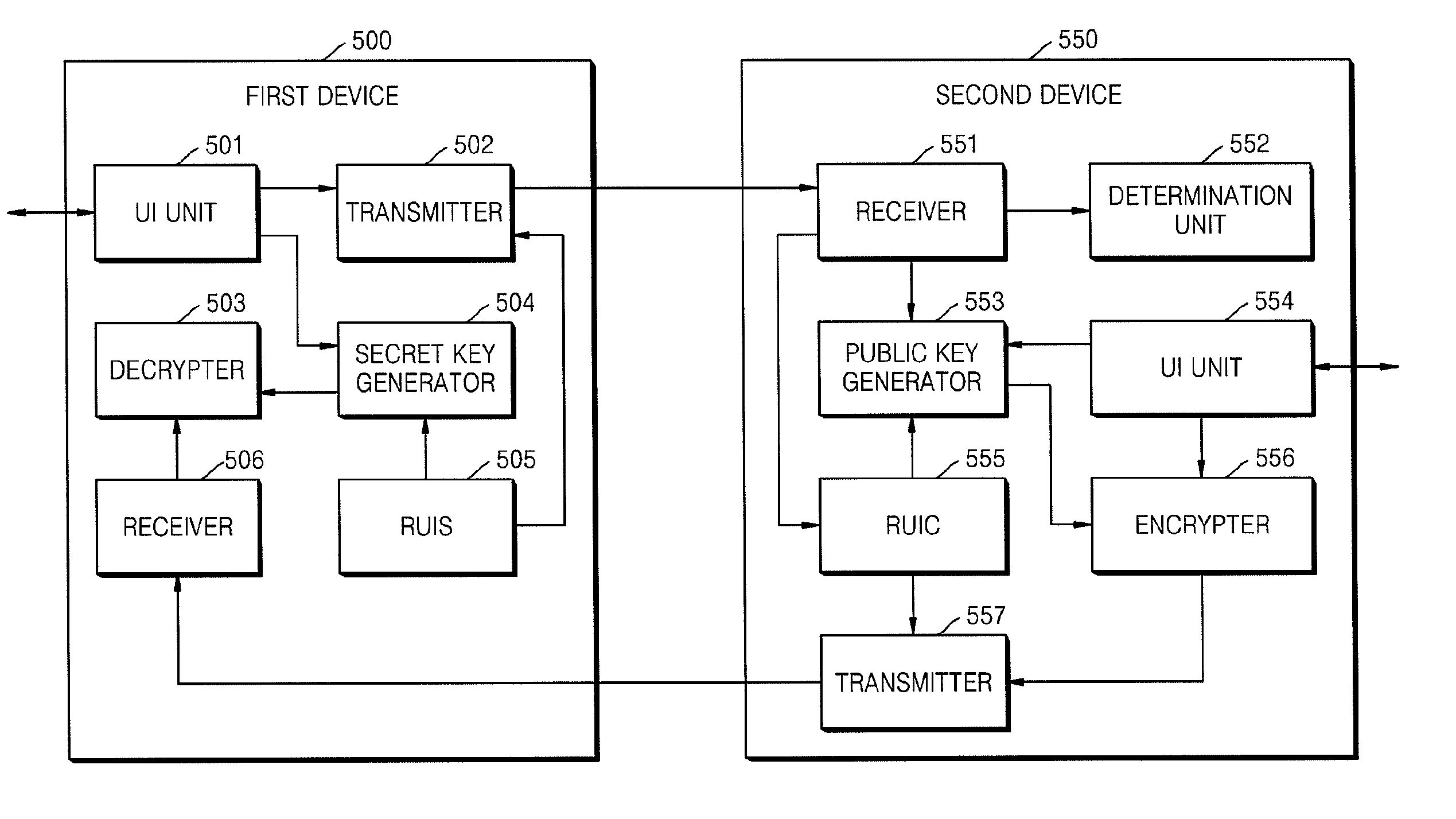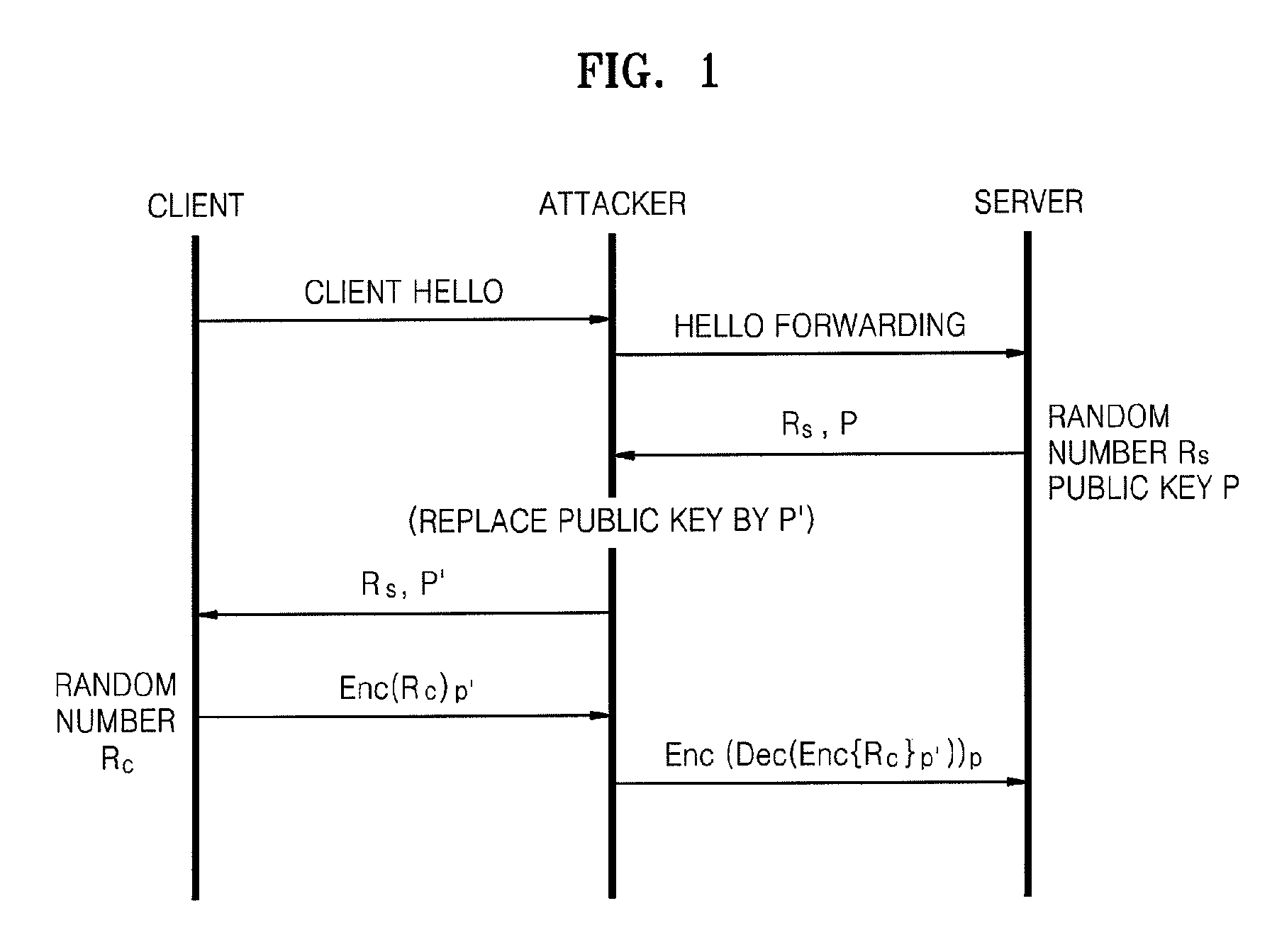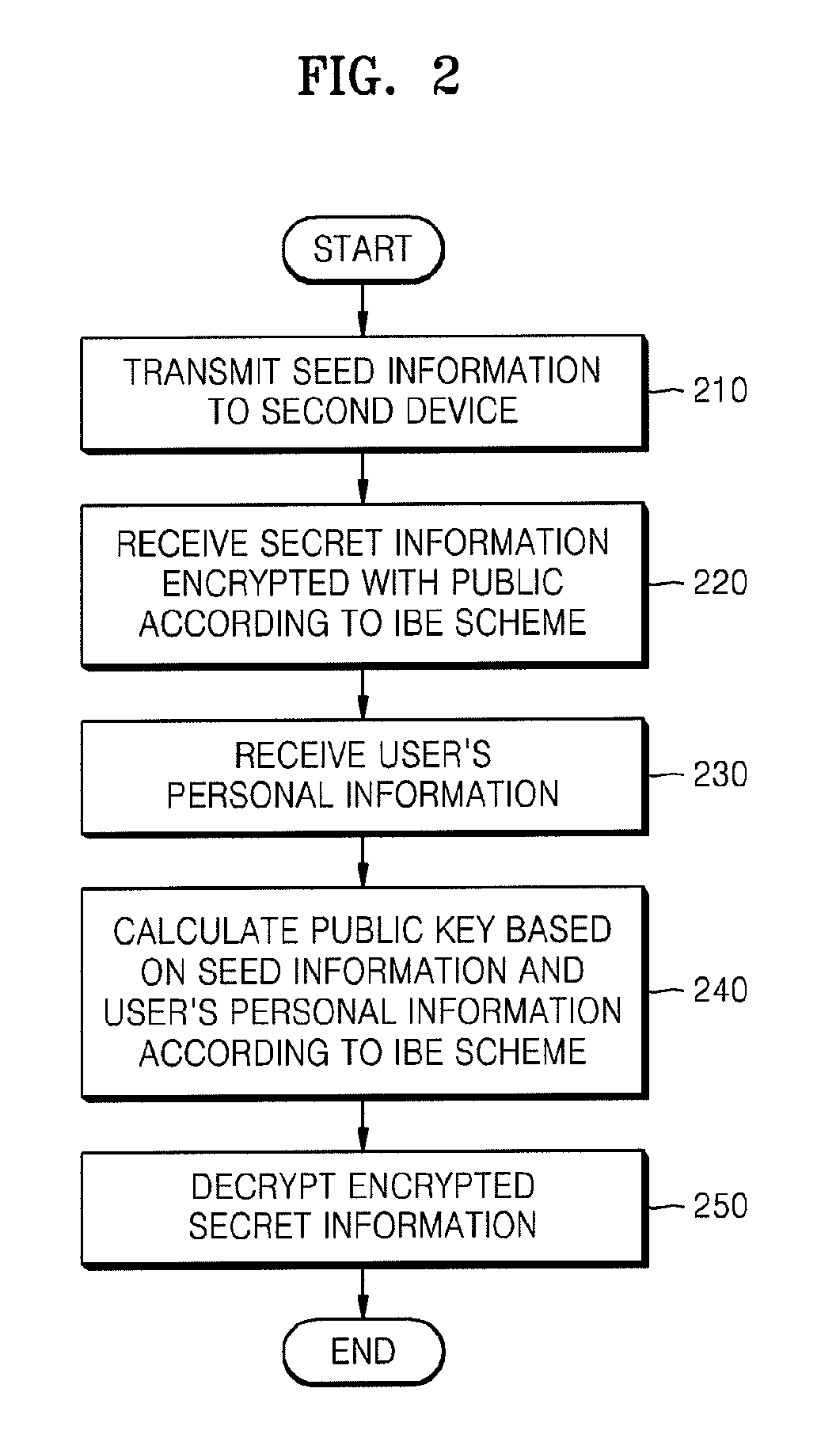Method of and apparatus for sharing secret information between device in home network
a technology of home network and secret information, applied in the field of home network, can solve the problems of burden on the home network, the risk of sensitive personal information such as social security numbers or credit card numbers being exposed to an attacker, etc., and achieve the effect of avoiding complicated calculations for certificate verification and reducing traffic for certificate exchang
- Summary
- Abstract
- Description
- Claims
- Application Information
AI Technical Summary
Benefits of technology
Problems solved by technology
Method used
Image
Examples
first embodiment
[0049]FIG. 4 is a flowchart for explaining a communication method between first and second devices according to the present invention.
[0050]In operation 401, the first device transmits the seed information to the second device.
[0051]In operation 402, the user inputs the credential to the second device.
[0052]In operation 403, the second device calculates the public key of the first device based on the seed information and the credential according to the IBE scheme.
[0053]In operation 405, the second device encrypts the secret information with the public key.
[0054]In operation 406, the second device transmits the encrypted secret information to the first device.
[0055]In operation 407, the user inputs the credential to the first device.
[0056]In operation 408, the first device calculates the secret key based on the seed information transmitted to the second device in operation 401 and the credential input by the user in operation 407 according to the IBE scheme.
[0057]In operation 409, th...
second embodiment
[0073]FIG. 6 is a flowchart for explaining a communication method between first and second devices according to the present invention.
[0074]As shown in FIG. 6, the first device is an RUI server, and the second device is an RUI client.
[0075]In operation 601, a user designates a device name Did and a credential to the first device and inputs the device name and credential to the first device.
[0076]In operation 602, the first device stores the credential in a digest form, for example, H(P, Mpub, Did, cred). Since the credential H can be a value unique to a home network device, the credential H is referred to as an ID. Here, P denotes a set of parameters (for example, binary mapping) of the IBE scheme to be used by the first and second devices, and Mpub is a master public key of the first device to be used for generating a key according to the IBE scheme. H is a secure one-way function and is shared between the first and second devices.
[0077]In operation 603, the first device transmits ...
third embodiment
[0089]FIG. 7A is a flowchart for explaining a communication method between first and second devices according to the present invention.
[0090]In the current embodiment, the first device is an RUI server, and the second device is an RUI client. CEA-2014, a home network standard of the Consumer Electronics Association (CEA), is applied to the embodiment. The CEA-2014 provides a browser-based communication method in a UPnP home network. Devices according to the CEA-2014 provide the UI as web pages described in the CE-HTML standard that is a specific version of HTML.
[0091]In addition, in the current embodiment, the IBE scheme proposed by D. Boneh and M. Franklin is employed. In the IBE scheme, bilinear Diffie-Helman assumption and a random oracle model are used. A detailed description thereof is disclosed in the aforementioned document, titled “Identity based encryption from the Weil pairing.”
[0092]In the current embodiment, the first device is embedded with an elliptic curve group G1 of...
PUM
 Login to View More
Login to View More Abstract
Description
Claims
Application Information
 Login to View More
Login to View More - R&D
- Intellectual Property
- Life Sciences
- Materials
- Tech Scout
- Unparalleled Data Quality
- Higher Quality Content
- 60% Fewer Hallucinations
Browse by: Latest US Patents, China's latest patents, Technical Efficacy Thesaurus, Application Domain, Technology Topic, Popular Technical Reports.
© 2025 PatSnap. All rights reserved.Legal|Privacy policy|Modern Slavery Act Transparency Statement|Sitemap|About US| Contact US: help@patsnap.com



